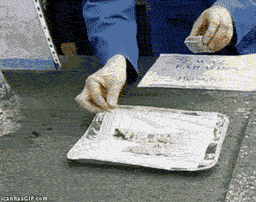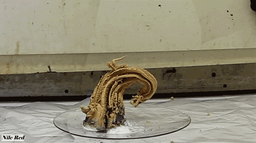Pharaoh's Serpent (chemical reaction)

Pharaoh's Serpent (chemical reaction)
The decomposition of Mercury(II) thiocyanate (Hg(SCN)2) is known in layman terms as "the pharaoh's serpent" or "the pharaoh's snakes" due to the surreal, snake-like physical appearance of the chemical reaction's products.
Igniting mercury(II) thiocyanate causes it to decompose into an insoluble brown mass that is primarily carbon nitride, C 3 N 4 .
Mercury(II) sulfide and carbon disulfide are also produced.
Mercury(II) sulfide reacts with oxygen to form mercury vapor and sulfur dioxide.
Mercury thiocyanate was formerly used in pyrotechnics causing an effect known as the Pharaoh’s serpent or Pharaoh’s snake.
However, use of the substance has been recently banned as the reaction was toxic.
History
In 1863, restrictions existed to control the sale of arsenic.
This was because of the risk of inadvertant, or criminal, injestion of this deadly poison.
However, a well-to-do youngster in Edinburgh could walk into a shop and, with no questions asked, buy enough mercuric thiocyanate to poison several people.
To death.
In an extremely unpleasant manner.
Edinburgh toy shops were selling pharaoh's serpent eggs.
These indoor fireworks consisted of small tablets of mercuric thiocyanate, which upon ignition would produce remarkable snake-like ash.



